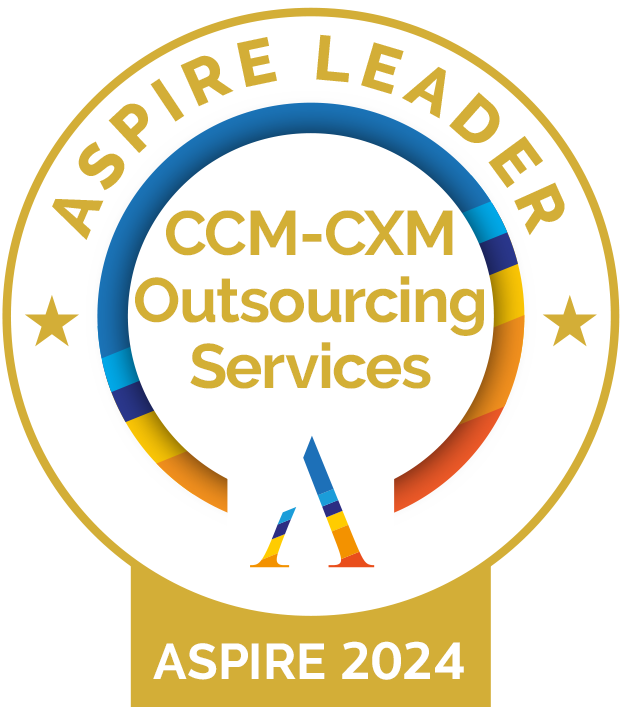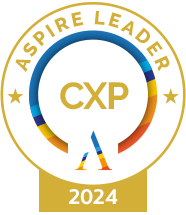b2C / b2B payments
Business to business (B2B) and business to consumer (B2C) payments refer to who will be paying. In other words, B2B and B2C payments explain who the business is selling to, and who is the purchaser. B2B businesses sell to other businesses and B2C businesses sell directly to a consumer. As costs rise, don’t take the heat for past-due payments. By offering your customers flexibility and choice and communicating the payment channels, methods and scheduling options available to them, you’ll collect payment faster and reduce DSO while also improving customer experience.
Bill payment
The compensation for a service. Using technology that fully integrates digital and print solutions across the entire collections experience, with offerings ranging from industry-specific payment portals to self-service letter template management, you can simplify payment processing to get paid faster.
Bill presentment
Generating an invoice (i.e., a bill) and sending it to a customer for payment via print or digital methods. Bills and invoices, tax notices and subscription renewals. These are the lifeblood of many businesses and a chance to capture more spend from consumers. As a leader in customer engagement management, we understand the nuances and strict specifications that come with these critical documents.
Centralized database / CDB
A centralized database (CDB) is a database that is located, stored, and maintained in one location. This is most often a central computer or database system, for example a desktop or server. Data is notoriously messy. Not only is it scattered across different areas of a business, but it’s often in a format that is unusable across initiatives. Not having normalized data in a single digital system not only thwarts digital transformation initiatives, it also limits your ability to deliver personalized payments communications and reminders that can boost customer retention.
Customer engagement management / CEM
Customer engagement management is the collection of processes a company uses to track, oversee and organize every interaction between a customer and the business throughout the customer lifecycle. In essence, customer engagement comprises the actions a customer takes that help build a relationship with your brand. These can be both online and offline, from clicking on an email and liking a social media post to walking into a brick-and-mortar store and opening a direct mail piece. The more actions a customer takes with your organization, the more likely they are to continue doing business with you.
Customer journey
A customer journey describes the path of interactions an individual has with your brand, product, and/or services. It can include both direct interactions, like contacting customer service, and indirect interactions, like hearing about the brand at an event. No two customer journeys are alike, and they can help marketers adapt their strategies to each individual. A common mistake companies make is to go through the hard work of obtaining a customer and then let that work go to waste. Some reports indicate it costs 5 times more to attract new customers than retain existing ones! Ensure your customers are happy with excellent customer service and loyalty campaigns. As some turnover is inevitable, perform a churn analysis to understand why customers are leaving, and then act on the insights gained. And remember, previous customers are now prospects, so treat them accordingly.
Customer experience & strategy / CX
Customer experience (CX) refers to how a business engages with its customers at every stage of their journey—from sales to customer service and anything in between. Through the data you collect about their preferences and habits, like how they want to receive a billing statement and what channel they choose to make payments. This information helps you tailor experiences to your customers, engaging with them within the channels and during the moments that matter.
Days sales outstanding / DSO
Days Sales Outstanding (DSO) represents the average number of days it takes credit sales to be converted into cash or how long it takes a company to collect its account receivables. Now with current economic factors upon us, consumers will face even higher utility bills and may struggle to pay car loans and mortgages. What’s more, some individuals might unwittingly be choosing the costliest ways to pay, such as via cash or check in person, which adds to their mounting fees. This leads to more days sales outstanding (DSO) and stunted cash flow. Fortunately, there are strategies to reduce DSO and improve cash flow by promoting alternative payment options and digital channels.
Digital adoption
Adoption of digital workflows or processes with new technolog/software. If you’re thinking about starting a digital transformation initiative for your business, well good, because, quite frankly, you must. We didn’t say so. Your customers did. They want options—60.5 percent of consumers say they crave flexibility to select their payment method as a desired bill-pay feature.
Digital transformation
A term used to describe the process of migrating various aspects of a business via digital technologies. As you introduce new digital ways of paying bills, you need a way to integrate these options in one place. You also need to be able to accept payments from customers quickly and securely through these channels. An intuitive and configurable payment portal with centralized collections, reconciliations and reporting gives you these options with few tech resources required to set up. This type of platform can power mobile app, text and auto-pay (plus print, phone and in-person) so customers can pay however they want, whether that’s ACH, debit card, credit card, check, cash or Apple Pay, to name a few.
Digital wallet / Super wallet
A digital wallet (or electronic wallet) is a financial transaction application that runs on mobile devices. It securely stores your payment details. A super wallet is a system where users can manage payments, savings, investments, crypto, budgets, loans, insurance, and more, all in one place. The world is increasingly becoming a cashless one. Global cashless payment volumes are forecasted to grow more than 80% by 2025, with over 80% of customers who primarily used cash or checks pre-pandemic, are now planning to use more digital payment tools going forward.
eAdoption
E-adoption refers to the use of electronic tools to accomplish one or more tasks. Working digital adoption, especially payments, into your billing strategy eliminates the guesswork of your print and mailing initiatives, decreasing the chances that ongoing global supply chain issues and economic events will prevent you from getting paid on time. Digital adoption gives you control in an uncertain time and can help you capture more customer attention and grow loyalty for the long term.
FinTech
“Financial technology” refers to organizations using new technology to compete with traditional financial methods. Accepting payments quickly and securely through multiple channels is the best way to engage with customers today. We simplify your entire payments infrastructure by helping you integrate and manage powerful, scalable payment capabilities on an intuitive and configurable platform—a foundation for digital transformation.
First party data
This is information a business collects directly from its customers. Your first-party data can help you segment your audience to design customized emails specific to each group. You can also A/B test subject lines, headlines and other email components to gauge which ones produce the best response from each segment.
MarTech
“Marketing technology” is a range of software and tools that work in achieving marketing goals. EverView offers a complete suite of communications and marketing services that meet your customers where and when they want to engage—and helps you drive marketing that fosters brand loyalty. Integrate any number of our EverView Promote solutions to increase customer acquisition, retention, loyalty, and brand affinity.
Mobile payments
This is a payment made for a product or service through a portable device such as a tablet or cell phone. Mobile payment technology can also be used to send money to friends or family members with applications like Apple Pay or Venmo. Eighty-five percent of Americans now own a smartphone, and 15% are “smartphone-only” internet users with no home Internet. Fifty-eight percent spend more than three hours on their phone each day. This means mobile presents a huge opportunity to influence the customer journey as part of an omnichannel marketing strategy.
Omnichannel
Describes an approach to sales that seeks to provide customers with a flexible experience, whether they’re a customer online from a desktop or mobile device, by telephone, or in-person. An omni channel approach would support an array of marketing options for sales. Omnichannel marketing simply can’t be done well if you use multiple disparate systems with siloed data. A single platform that integrates with your other systems and unites all of your customer data will help you better understand not only your customers, but also which channels are working best and when to optimize them.
Organic search
Organic search results are the unpaid listings that appear on a search engine results page (SERP). These results are listed based on factors such as relevance to the user’s search, links, and search engine optimization (SEO). Over 90% of online experiences start with a search engine. Two-thirds of marketers feel SEO is an effective strategy for hitting their marketing goals, and there’s good reason why. Organic search traffic is a whopping 1,000% higher than organic social media, and 75% of shoppers like paid search ads because they make it easier to find the information they need.
Paid search ads
Paid search advertising is a type of digital marketing strategy that allows a bussiness to pay search engines to place their results higher on relevant search engine results pages (SERPs) with the goal of driving traffic to their site. Pay-per-click or PPC advertising is the most common form of paid search. Paid and organic search is a marketing tactic that requires deep expertise and access to SEO tools that can uncover the best keyword opportunities to pursue for your brand. If paid and organic search aren’t skill sets you have internally, it pays to outsource. The above Merkle research shows that 45% of marketers outsource search while just under 44% outsource SEO.
ROI
Return on Investment (ROI) is a popular profitability metric used to determine how well an investment performed. ROI is expressed as a percentage and is determined by dividing an investment’s net profit (or loss) by its initial cost. It costs far more to attract new customers than it does to keep your existing ones. And keeping your customers in the fold starts by investing time and resources into identifying why they leave. It also means developing a strategy that improves the customer experience and automation that simplifies the work.
SaaS
Software as a service (or SaaS) is a way of delivering software over the internet, freeing users from complex software and hardware management. SaaS applications are also known as web-based software, on-demand software, or hosted software. They run on a SaaS provider’s servers, who manages access to the application, including security, availability, and performance. If customer engagement management is not something you’re set up for from an infrastructure, data, or talent perspective, it makes sense to find a partner who can help you achieve it. By outsourcing what you’re not as skilled at and focusing on what you are, you’ll be setting yourself up for greater business growth and customer loyalty.
SMS payment
SMS stands for Short Message Service and is commonly referred to as a Text. The business might send a text message to the customer with a link to click for payment processing. SMS is an incredibly personal, mass-reach, and timebound advertising medium, with an average open rate of 98%+ and texts read within three seconds of receipt. It’s also an incredibly useful channel for omnichannel marketing.While SMS engagement rates can be up to eight times higher than email, the two are great channels to consider using together.
Static bills
Your emailed bill, like paper bill mailed to you, is static. It is a snapshot in time of what your account looked like at the time the invoice was sent out. It will not be updated until the next billing cycle. You are likely to get paid faster if you provide multiple ways to pay, which a customer can vary each month. Sixty percent of consumers want flexibility to select their payment method as a desired bill-pay feature. The key is to make it seamless for customers to toggle between all of the different payment channels, like mobile, text and live CSR, and methods like debit and credit card or Apple Pay.




